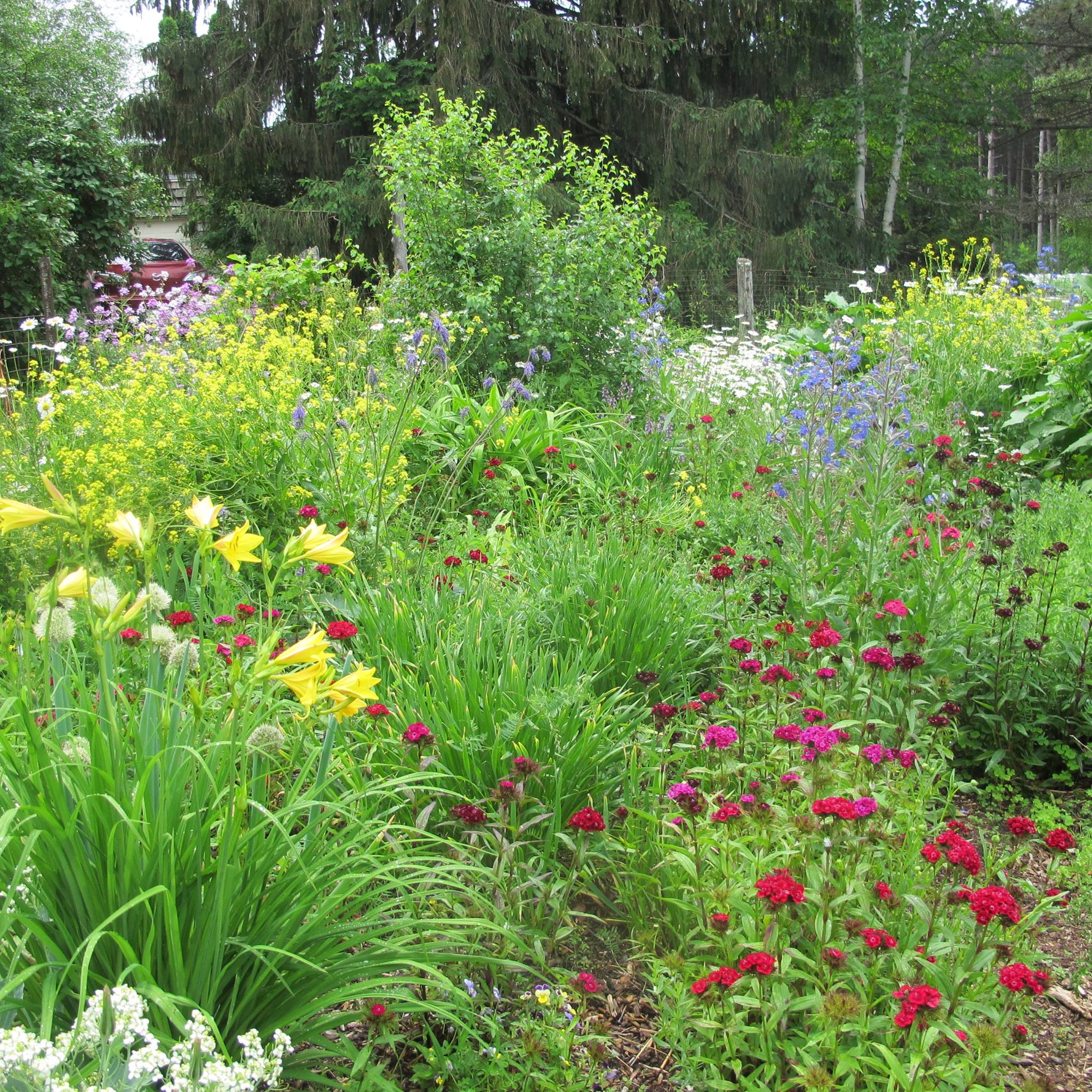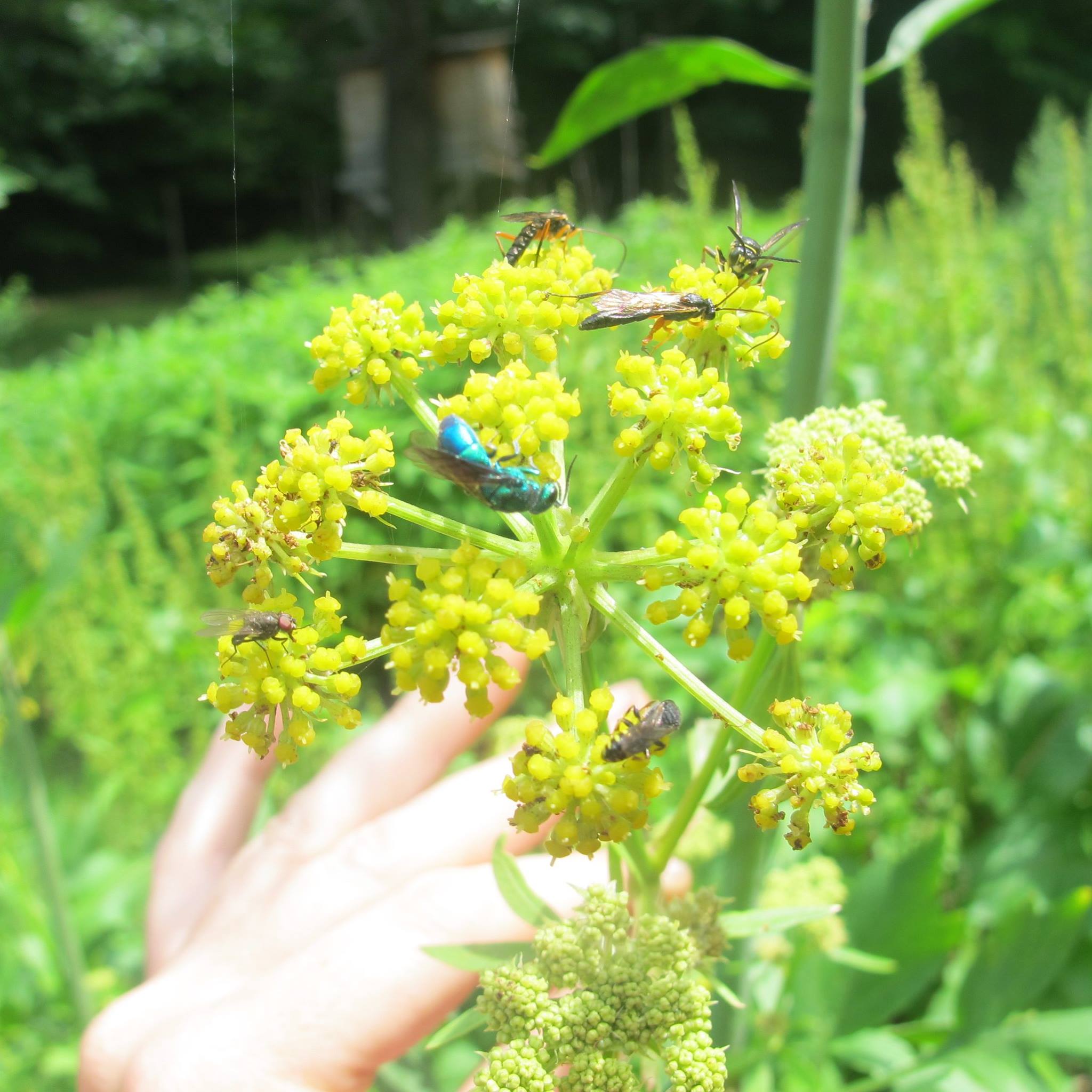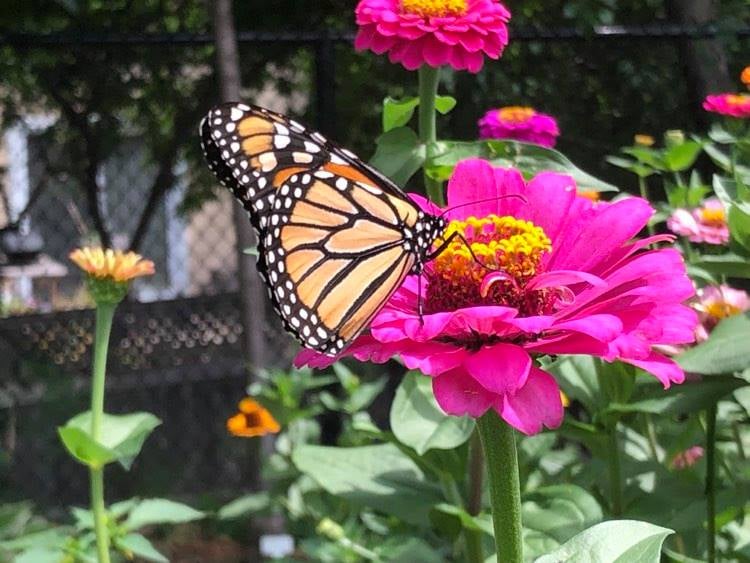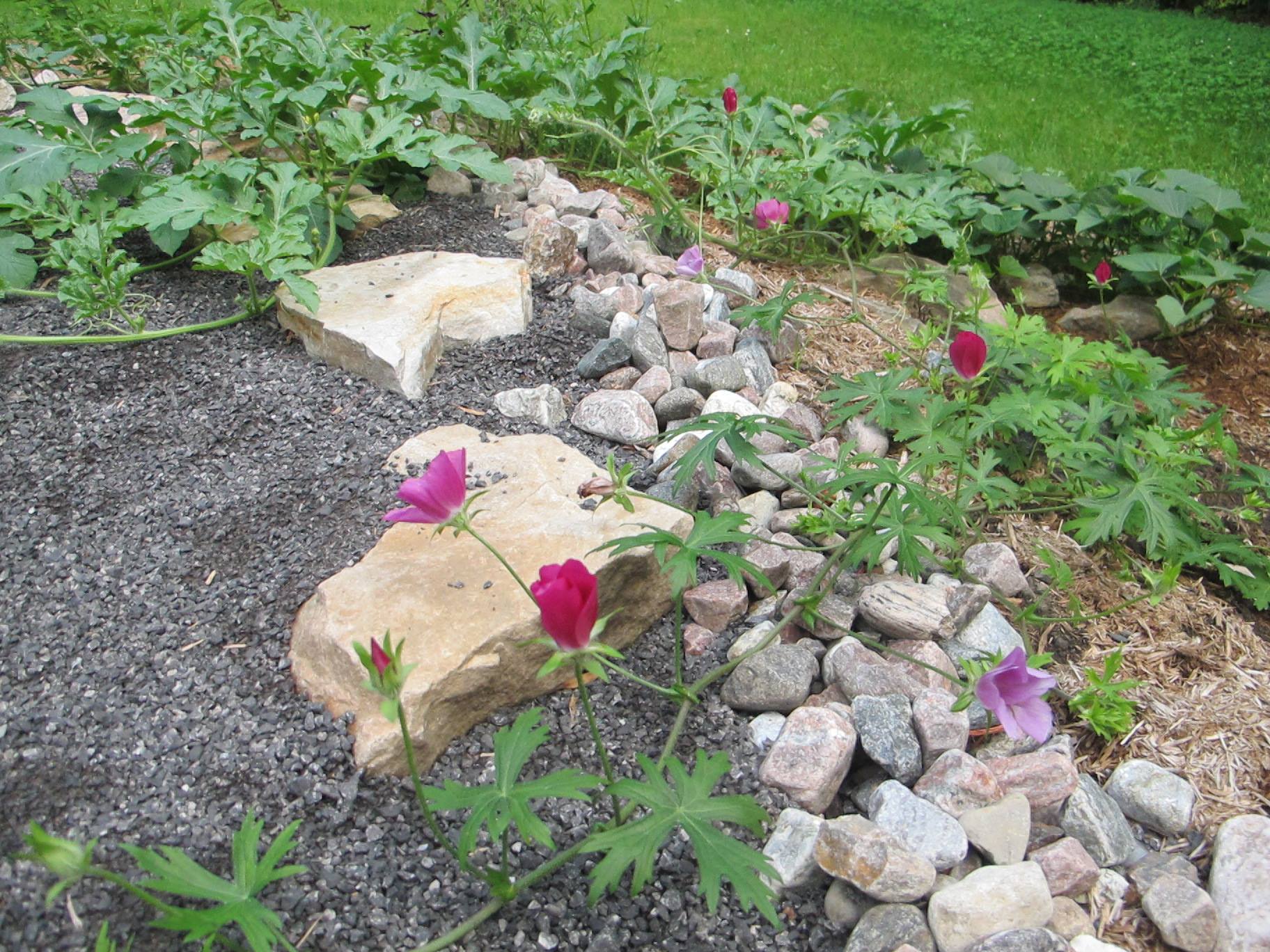Planting flowers, or alongside, your vegetables can have a number of benefits including adding beauty, confusing pests and attracting beneficials. Here are some ways to create wonderful combinations.

Confuse Sight and Scent Signals
Pests (otherwise known as creatures that share vegetables and at low levels are usually non concerning) may become confused while seeking their host plant when confronted with a mixture of plant shapes, sizes or by strong scents. Chemical signals exuded by various parts from roots to flowers may even ward off pests. Even texture on a plant can act as a deterrent such as fuzzy or prickly plants. This is the part of the theory behind why pumpkins *may* keep larger herbivores away from corn in the three sisters. Petunias are both a bit fuzzy, sticky and strongly scented. They have a reputation for warding off various insects.
Trap Crops
Rather than ward away, some may draw pests to them preferentially such as in the case of Nasturtiums attracting aphids away from your main crop, or Asian greens being used to draw flea beetles from your cabbages. Apparently Zinnia will lure Japanese beetles. I’ve never observed this but they will be eaten by a plague of earwigs (as were my carrots before earwig predators reached higher populations).

Bouquets of different flowers
Different nectar and pollen seekers have different mouth parts. Some native bees have shorter tongues that benefit from smaller flowers such as Agastache or Alyssum. Drawing a diversity of bugs into your garden gives a higher chance of a system that can react to a sudden increase in a population of pests by supporting predators. It also makes for more interesting nature walks around your own garden.

Hosting Diversity
A rich ecosystem, even on the scale of your garden, will help a multiplicity of life thrive. Attract butterflies by including habitat for their caterpillars such as Orange Milkweed for monarchs. Also plant nectar sources for the adults such as Echinacea. For each butterfly of interest, look up what they need. Swallowtails lay their eggs on members of the carrot family and Fritillary on Violets, for example.
Hummingbirds are often attracted to similar nectar sources as butterflies but in particular tubular flowers like Salvia and Cana lily. Some others are Hibiscus and Sunset Agastache. They often prefer hotter colours such as red and orange.

Plant for the full season such as Primulas in the spring, Sedum in high summer, and asters in the fall.
It’s great to vary the environment too by including some shade, perhaps putting in a downspout garden, leaving an area of bare sandy soil for burrowing bees and so forth. It’s wonderful and educational to walk around a rich backyard noting changes in the season of not only the greenery but also the other creatures that make your garden a home.
Joy and Beauty
Not to be forgotten, flowers enhance the aesthetics of the garden. There are many rules when it comes to garden design but most of them fall under these three (according to me): contrast, comparison and flow. First and foremost is to set up contrasts. Large bold foliage like Hopi Red Dye Amaranth or Dahlia will look lovely mixed in with the feathery foliage of Cosmos or Nigella. You can also draw out similarities between plants. I love planting Pink and red stemmed swiss chard with brightly coloured Petunias or lining a bed of pumpkins with trailing nasturtium. Try the silvery colour of seakale with the golden hues of Coreopsis or go for a cool combo of purple snap peas underplanted with white Alyssum.

Lastly is flow. This is a big concept that deserves its own post as we can think of flow of all dynamic components of the garden but for a moment, let’s just think of the flow of plants like paint strokes. Orderly strokes gives a different feel than varying ribbons of colour. Self seeding plants like Jonny jump ups do drifts naturally as they move around the garden. The flowers are also a pretty edible.
In the next few posts, I’ll be focusing on different aspects of interplanting flowers with vegetables!